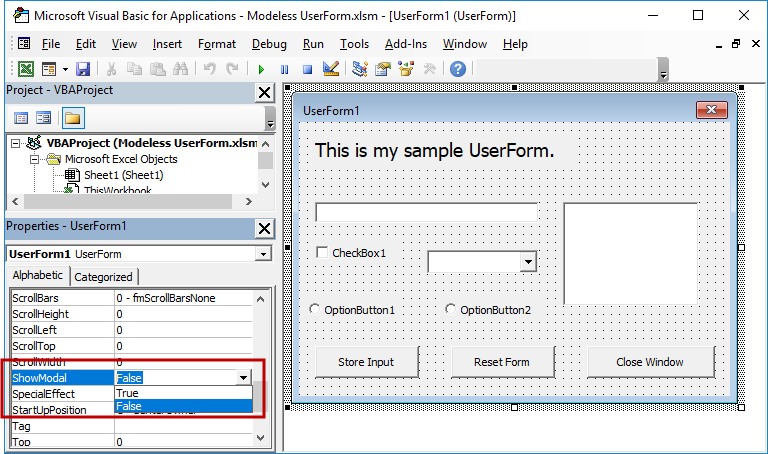
The three windows in which our code and userform layout should appear Here are the three screens where we input VBA code to control our userform: Our simple userform now has a new command button caption

Originally the caption the of the command button read “Choose your File” in the caption button, but now it says “Click Me.” Show method is called, your userform will rewrite the default text of the Command Button. Private UserForm_Initialize () Userform1. To show it to the user, put this code into a regular module: Our visually-unappealing form looks like this: I added three basic elements: a command button, a label, and a textbox so our userform is not just an empty box.

Let’s start with a userform named Userform1 (this is the default name when you create a userform). One useful application might be directing the user to choose a text file and inputting which words to extract and count. You can use Userforms to call other Userforms and even run subroutines.

Without showing the form, though, the user cannot interact at all!īy implementing userforms in your program, you can guide your users and interactively gather user input, like picking from a list or typing a filename. Userforms are far more flexible than the InputBox so you can have all sorts of interactions with users. Like the Application.InputBox, userforms are great for collecting user input. The VBA Userform.Show method does exactly what one would expect: it displays the userform on the screen.


 0 kommentar(er)
0 kommentar(er)
